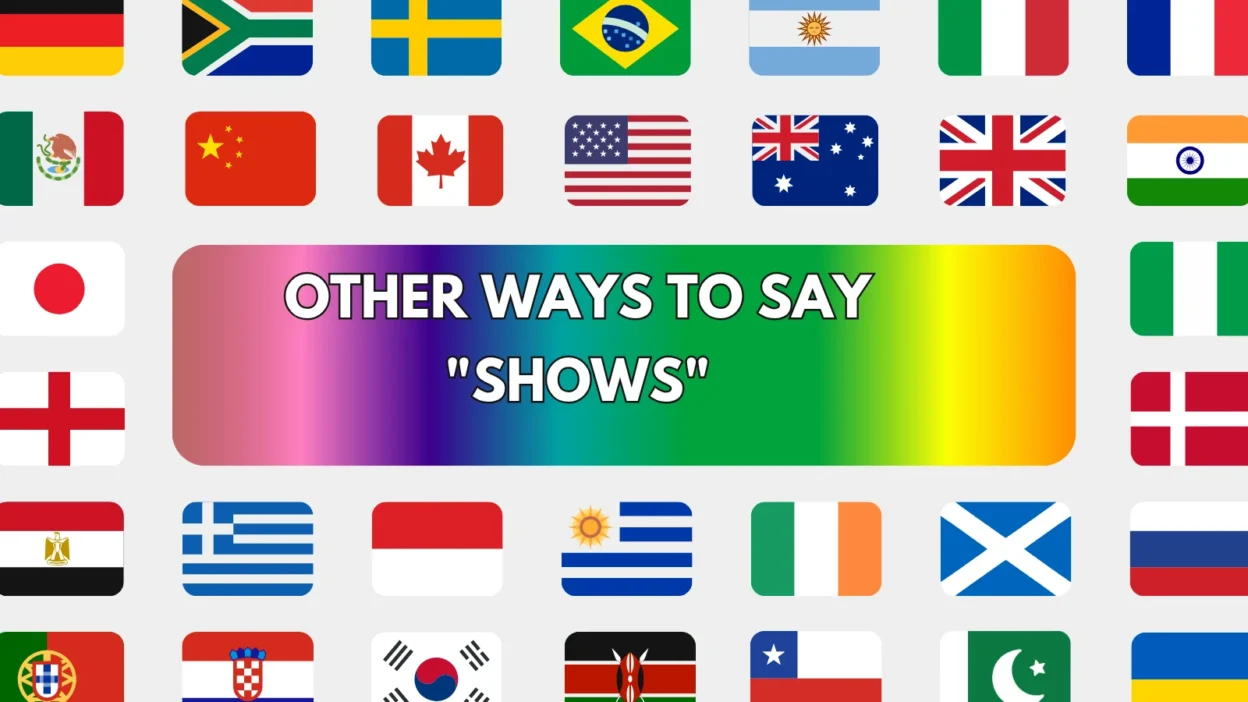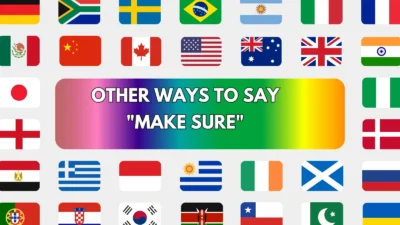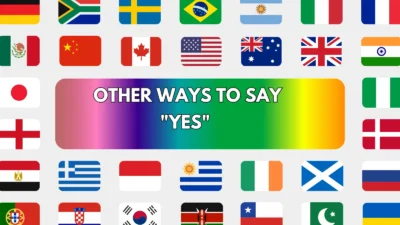The word “shows” is commonly used in writing to express what something reveals, demonstrates, or illustrates. Whether you’re writing an essay, email, or report, overusing “shows” can make your writing feel repetitive or too simple.
To improve clarity and variety in your language, it’s helpful to use different alternatives that suit different tones and contexts. Below are 25 excellent alternatives to “shows,” each with practical explanations to help you choose the right one for your needs.
1. Demonstrates
Meaning:
Reveals something clearly through evidence or action.
Detailed Explanation:
“Demonstrates” is more formal and precise than “shows,” often used in academic or analytical contexts.
Scenario Example:
The data demonstrates a clear upward trend in customer satisfaction.
Best Use:
Research papers, presentations, professional analysis.
Tone:
Formal, precise, academic.
2. Indicates
Meaning:
Suggests or points to something being the case.
Detailed Explanation:
This is used to show indirect evidence or a suggestion rather than a proven fact.
Scenario Example:
The results indicate a need for further testing.
Best Use:
Reports, science, or technical documents.
Tone:
Neutral, objective, professional.
3. Reveals
Meaning:
Uncovers or makes something known.
Detailed Explanation:
“Reveals” adds a sense of discovery or surprise — ideal when something previously hidden becomes clear.
Scenario Example:
The survey reveals that most users prefer the new interface.
Best Use:
News articles, essays, research findings.
Tone:
Informative, revealing, engaging.
4. Illustrates
Meaning:
Explains or makes something clear using examples or visual references.
Detailed Explanation:
Useful when describing visual materials or conceptual ideas.
Scenario Example:
This chart illustrates the impact of remote work on productivity.
Best Use:
Presentations, diagrams, educational content.
Tone:
Clear, instructional, formal.
5. Highlights
Meaning:
Brings attention to a specific point or detail.
Detailed Explanation:
A strong alternative to “shows” that emphasizes importance.
Scenario Example:
This report highlights the key challenges faced by the team.
Best Use:
Executive summaries, reviews, summaries.
Tone:
Emphatic, professional, focused.
6. Portrays
Meaning:
Describes or represents something in a specific way.
Detailed Explanation:
Often used in creative or literary writing to describe how something is depicted.
Scenario Example:
The film portrays the struggles of young entrepreneurs.
Best Use:
Literature, art critiques, media discussions.
Tone:
Descriptive, expressive, nuanced.
7. Depicts
Meaning:
Represents something visually or through words.
Detailed Explanation:
Similar to “portrays” but with a slightly more formal edge.
Scenario Example:
The novel depicts life during the civil war with striking detail.
Best Use:
Book reviews, historical analysis.
Tone:
Descriptive, artistic, formal.
8. Expresses
Meaning:
Conveys an idea, emotion, or opinion.
Detailed Explanation:
Best for describing emotions, feelings, or viewpoints.
Scenario Example:
The artist expresses his love for nature through this painting.
Best Use:
Creative writing, communication, design.
Tone:
Emotional, artistic, thoughtful.
9. Reflects
Meaning:
Mirrors or gives a true representation of something.
Detailed Explanation:
Adds a deeper sense of alignment or accuracy.
Scenario Example:
The changes reflect our commitment to diversity.
Best Use:
Mission statements, internal communication, editorials.
Tone:
Thoughtful, sincere, reflective.
10. Suggests
Meaning:
Proposes or implies an idea without stating it directly.
Detailed Explanation:
This alternative shows a level of uncertainty or indirect evidence.
Scenario Example:
The data suggests that remote workers are more productive.
Best Use:
Reports, hypotheses, analysis.
Tone:
Tentative, logical, neutral.
11. Signals
Meaning:
Serves as an indicator or sign of something.
Detailed Explanation:
Often used in economics, business, or trend analysis.
Scenario Example:
The sudden drop in demand signals a potential market shift.
Best Use:
Forecasts, industry reports, trend analysis.
Tone:
Analytical, predictive, factual.
12. Represents
Meaning:
Stands for or symbolizes something.
Detailed Explanation:
Great for abstract concepts, symbolic writing, or statistics.
Scenario Example:
This graph represents the growth of our user base.
Best Use:
Charts, models, public speaking.
Tone:
Clear, symbolic, professional.
13. Conveys
Meaning:
Communicates a thought, message, or feeling effectively.
Detailed Explanation:
Often used in emotional or persuasive writing.
Scenario Example:
The design conveys a sense of elegance and simplicity.
Best Use:
Marketing, storytelling, brand messaging.
Tone:
Smooth, expressive, creative.
14. Affirms
Meaning:
Confirms something as true or valid.
Detailed Explanation:
Stronger than “shows” — adds confidence to the message.
Scenario Example:
The study affirms our assumptions about consumer behavior.
Best Use:
Formal papers, legal or scientific writing.
Tone:
Confident, authoritative, formal.
15. Underscores
Meaning:
Emphasizes something as especially important.
Detailed Explanation:
Used to draw attention or reinforce a major point.
Scenario Example:
The incident underscores the importance of safety measures.
Best Use:
Persuasive writing, reports, business plans.
Tone:
Strong, persuasive, formal.
16. Establishes
Meaning:
Proves or sets something as a fact.
Detailed Explanation:
Shows that something has been solidly confirmed or created.
Scenario Example:
The findings establish a new standard in clinical research.
Best Use:
Academic or technical writing.
Tone:
Formal, confident, academic.
17. Confirms
Meaning:
Verifies that something is true or accurate.
Detailed Explanation:
Often used to validate a previous assumption or result.
Scenario Example:
This feedback confirms our understanding of client needs.
Best Use:
Business reports, customer service, testing results.
Tone:
Assured, precise, professional.
18. Points Out
Meaning:
Directs attention to a specific detail or fact.
Detailed Explanation:
Less formal, good for making a key point in a conversational tone.
Scenario Example:
She pointed out the error in the document.
Best Use:
Emails, team meetings, casual communication.
Tone:
Clear, informal, direct.
19. Uncovers
Meaning:
Reveals something previously hidden or unknown.
Detailed Explanation:
Good for discoveries, research, or investigative writing.
Scenario Example:
The investigation uncovers serious gaps in compliance.
Best Use:
Journalism, research findings, audits.
Tone:
Investigative, curious, serious.
20. Identifies
Meaning:
Recognizes or detects something clearly.
Detailed Explanation:
Used in research or discovery contexts where something is named.
Scenario Example:
The report identifies the key factors influencing turnover.
Best Use:
Data analysis, project summaries.
Tone:
Professional, informative, analytical.
21. Exhibits
Meaning:
Displays or clearly reveals a quality or behavior.
Detailed Explanation:
Often used in scientific or character descriptions.
Scenario Example:
The patient exhibits signs of rapid recovery.
Best Use:
Medical writing, formal reports.
Tone:
Clinical, professional, formal.
22. Discloses
Meaning:
Reveals confidential or previously hidden information.
Detailed Explanation:
Common in legal, corporate, or journalistic settings.
Scenario Example:
The company disclosed its Q2 losses to shareholders.
Best Use:
Press releases, legal statements, financial reports.
Tone:
Serious, formal, transparent.
23. Displays
Meaning:
Visibly shows or presents something.
Detailed Explanation:
Visual and active, often used in presentations or descriptions.
Scenario Example:
The dashboard displays real-time system performance.
Best Use:
Tech, product demos, presentations.
Tone:
Clear, technical, informative.
24. Mirrors
Meaning:
Replicates or reflects something very closely.
Detailed Explanation:
Adds a poetic or figurative tone — great for metaphorical writing.
Scenario Example:
The novel mirrors real-life societal issues.
Best Use:
Literary writing, social commentary.
Tone:
Creative, figurative, expressive.
25. Exemplifies
Meaning:
Serves as a perfect example of something.
Detailed Explanation:
Used to highlight models, best practices, or ideal cases.
Scenario Example:
Her performance exemplifies leadership under pressure.
Best Use:
Academic, motivational writing, recognition.
Tone:
Respectful, elevated, formal.
Conclusion
The word “shows” is helpful — but using it too often can limit the depth and variety of your message. These 25 versatile alternatives will help you express ideas more clearly, powerfully, and appropriately across different contexts.




